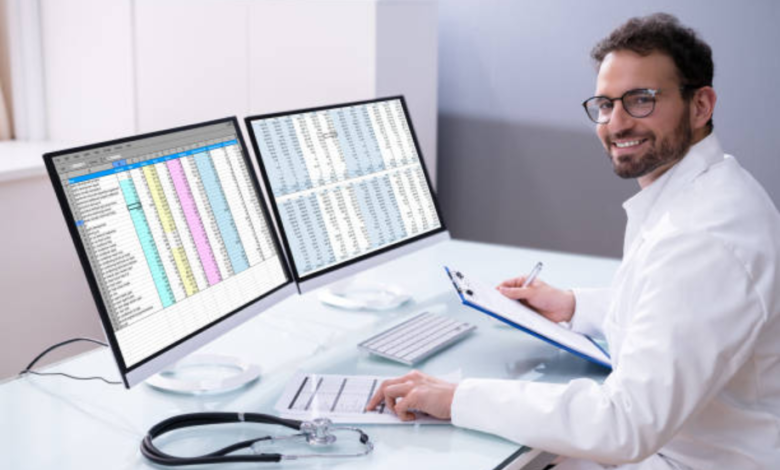Medical Charting Software: Modernising Patient Records for Better Care

Introduction
Healthcare has always relied on accurate and accessible patient information. From handwritten notes on paper charts to typed files stored in cabinets, the way records are kept has changed over the decades. However, with the increasing complexity of medicine, the rising number of patients, and the growing demand for efficiency, traditional paper-based systems have become outdated. This is where medical charting software has transformed the landscape. By digitising patient records, it enables healthcare providers to streamline workflows, reduce errors, and improve patient care.
In modern healthcare, providers cannot afford delays caused by misplaced charts or misinterpreted handwriting. Patients expect seamless communication, timely treatments, and a personalised care experience. With medical charting software, physicians, nurses, and administrators gain a centralised, secure, and instantly accessible platform for managing patient information. Whether in a small practice or a large hospital, the adoption of digital charting tools is no longer optional but essential.
What is Medical Charting Software?
Medical charting software is a specialised digital solution that allows healthcare professionals to create, organise, and manage patient charts electronically. Unlike paper charts that require physical storage, are prone to damage, and can be lost, digital charting systems ensure records are stored securely and can be accessed instantly. These platforms typically include details such as medical history, allergies, diagnoses, prescriptions, treatment plans, imaging results, and clinical notes.
The software goes beyond simple record-keeping. Many medical charting systems integrate with electronic health records (EHRs), laboratory information systems, telemedicine platforms, and billing solutions. This creates a unified ecosystem where every piece of patient information flows seamlessly from one department to another. For example, when a lab test is completed, the results are automatically updated in the patient’s chart, eliminating the need for manual entry. By centralising this information, medical charting software reduces errors and enhances care coordination.
Key Features of Medical Charting Software
The true value of medical charting software lies in its wide range of features that simplify complex tasks.
- Customisable Templates
Every medical specialty requires different documentation. For instance, a pediatrician will need vaccination charts, while a cardiologist may need templates for EKG results. Medical charting software offers customisable templates that allow providers to document information quickly and consistently, ensuring no critical details are missed. - Real-Time Data Entry
Traditional charting often leads to delays because notes are written after consultations. With digital systems, providers can enter data in real time during patient encounters. This reduces the risk of forgetting important details and ensures that all information is up to date. - Voice Recognition and Dictation
Charting can be time-consuming. Many modern platforms now include voice recognition technology, allowing providers to dictate notes instead of typing. This feature speeds up documentation and reduces administrative burden. - Medication Management
One of the most important features of medical charting software is its ability to manage prescriptions. Integrated drug databases help physicians prescribe safely by flagging potential drug interactions, allergies, or dosage errors before they reach the patient. - Secure Access and Permissions
Patient privacy is critical in healthcare. Medical charting software includes robust security protocols, including encryption and role-based access, ensuring that only authorised staff can view or edit records. This safeguards compliance with regulations such as HIPAA. - Integration with Labs and Imaging
Rather than waiting for paper reports, digital charting systems automatically import lab results and imaging files into patient charts. This instant integration saves time and helps providers make faster clinical decisions. - Analytics and Reporting
Beyond patient-level data, providers can generate reports on trends, outcomes, and performance. These insights help improve decision-making, streamline audits, and support research initiatives.
Benefits of Medical Charting Software
The adoption of medical charting software delivers a wide range of benefits for healthcare providers, patients, and organisations alike.
1. Improved Accuracy
Paper records are prone to misinterpretation due to illegible handwriting, missing pages, or human error. Digital charting ensures that every entry is clear, standardised, and complete. Built-in prompts and reminders also reduce the chance of omissions, improving clinical accuracy.
2. Faster Documentation
Time is one of the most valuable resources in healthcare. Medical charting software helps providers document encounters quickly through templates, automation, and voice dictation. This allows clinicians to spend more time interacting with patients instead of filling out paperwork.
3. Better Collaboration
Many patients require care from multiple specialists. With medical charting software, different providers can view and update the same record, ensuring everyone has the latest information. For example, a patient’s cardiologist, primary care physician, and physical therapist can all access a shared chart, improving coordination and continuity of care.
4. Enhanced Patient Safety
Medication errors are one of the leading causes of preventable harm in healthcare. Medical charting software reduces this risk by automatically checking for potential drug interactions, allergies, and dosage conflicts. Alerts and warnings ensure that providers make safer prescribing decisions.
5. Streamlined Workflows
By integrating with scheduling, billing, and laboratory systems, charting software eliminates redundant tasks. Patient information flows seamlessly between departments, reducing duplication and delays. A single update can reflect across multiple systems, ensuring efficiency.
6. Regulatory Compliance
Healthcare providers face strict legal and regulatory requirements. Medical charting software helps ensure compliance by providing secure data storage, audit trails, and access controls. This not only protects patient data but also shields providers from costly penalties.
7. Greater Patient Engagement
Many systems come with patient portals that allow individuals to view their charts, track their progress, and communicate with their care teams. When patients have easy access to their records, they become more engaged in their health, leading to better adherence to treatment plans.
8. Data-Driven Insights
Medical charting software also supports analytics that can be used to identify trends and improve population health management. For example, providers can track how many patients have uncontrolled diabetes and design interventions to improve outcomes.
See also: AI in Healthcare | Transforming Medical Diagnosis & Patient Care in 2025
Challenges of Medical Charting Software
Despite its advantages, implementing medical charting software is not without challenges.
- High Initial Costs – Purchasing software licenses, training staff, and updating infrastructure can be expensive, especially for smaller clinics.
- Learning Curve – Some staff may resist adopting new systems or struggle with digital documentation, requiring extensive training and ongoing support.
- Integration Issues – Not all systems integrate seamlessly with existing EHRs, labs, or billing platforms, which can create data silos.
- Data Security – Healthcare records are a prime target for hackers. Providers must invest in robust cybersecurity measures to protect sensitive patient data.
- Workflow Disruptions – During the transition from paper to digital charting, workflows may be temporarily disrupted, leading to frustration among staff.
The Future of Medical Charting Software
The future of medical charting software is promising, with innovations set to make systems even more powerful and user-friendly. Artificial intelligence (AI) is being integrated into charting platforms to assist with predictive analytics, suggest diagnoses, and even automate certain documentation tasks. Cloud-based charting is becoming the norm, offering greater accessibility, lower costs, and easier scalability.
Voice-assisted charting will continue to evolve, making it possible for providers to document entire encounters hands-free. Wearables and remote monitoring devices will feed real-time patient data directly into charts, allowing for continuous monitoring outside the hospital. Blockchain technology may also play a role, providing secure, tamper-proof patient records.
As technology advances, medical charting software will not only improve documentation but also actively assist providers in delivering preventive, proactive, and personalised care.
How to Choose the Right Medical Charting Software
Selecting the right medical charting software requires careful planning and evaluation. Healthcare providers should:
- Identify Practice Needs – A small practice may need basic documentation features, while a hospital may require a comprehensive solution with multi-department integration.
- Evaluate Usability – Choose software with a user-friendly interface that minimises training time and errors.
- Ensure Interoperability – The software must integrate seamlessly with existing EHRs, labs, billing, and pharmacy systems.
- Prioritise Security – Look for platforms with strong encryption, two-factor authentication, and compliance certifications.
- Check Vendor Reputation – Select providers with proven track records, good customer support, and regular software updates.
- Consider Scalability – Ensure the software can grow with the practice, supporting more users, patients, and locations over time.
Conclusion
Medical charting software has revolutionised how healthcare providers document, manage, and share patient information. By replacing paper charts with secure, digital platforms, it reduces errors, streamlines workflows, improves safety, and enhances patient engagement. Though challenges such as cost and integration remain, the long-term benefits far outweigh the drawbacks.
With innovations like AI, cloud computing, and wearable integration on the horizon, medical charting software will continue to evolve, helping providers deliver more efficient, accurate, and patient-centred care. For any healthcare organisation aiming to stay competitive and deliver excellence, investing in advanced medical charting systems is no longer optional—it is essential.




